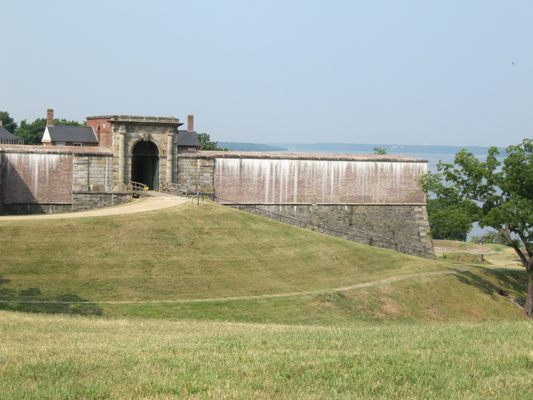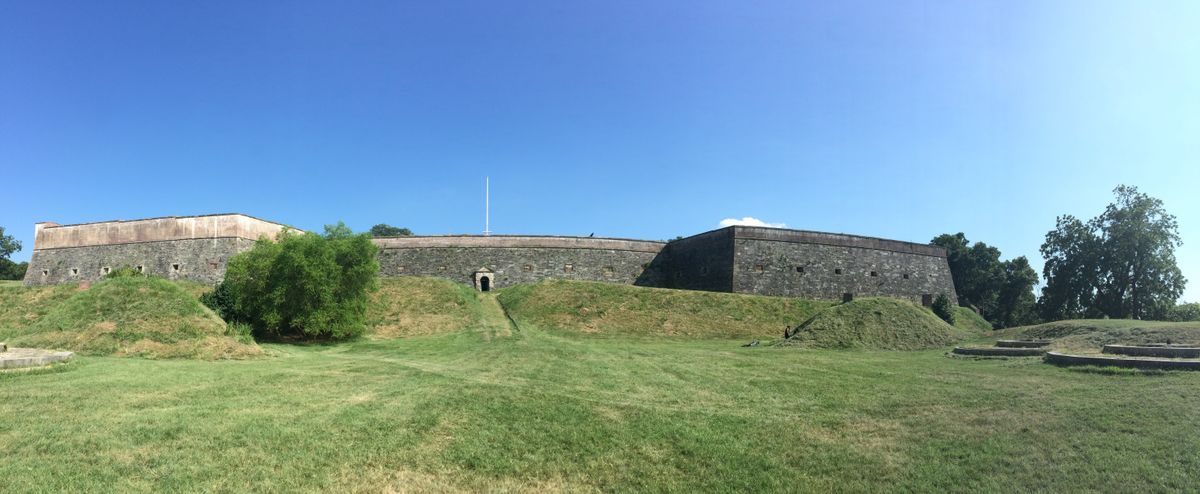About
During the War of 1812, 4,000 veteran Redcoats landed on the Patuxent River, marched in a wide arc around Fort Washington—the only defensive fortification in the area until the Civil War—and burned the Capitol.
Three days later a squadron of 10 Royal Navy warships approached Fort Washington and began shelling it. The fort's commander, Captain Dyson, retreated with his small garrison of men and blew up the magazine, destroying the fort. Dyson received a court martial for his actions.
After the war, Fort Washington was quickly rebuilt at the request of President Monroe. Today, the guns on the old fort still look down on the Potomac, guarding the southern approach to the nation's capital. It is one of the more interesting military history sites in the region.
Pierre L'Enfant oversaw construction of the brick and masonry structure we have today. L'Enfant's design drew heavily on the concept of a star fort. Two layers of triangular bastions produced overlapping fields of cannon and musket fire. Guns were located both within the walls and on the top parapet. This design remained largely unchanged through the Civil War.
One of the most interesting things about Fort Washington is that it was continuously expanded over the 19th and early 20th centuries, and you can see progressive generations of military hardware side by side. Ironclad battleship design steamed ahead in the 1870s and 1880s, and Secretary of War William Endicott lobbied for the construction of a new system of coastal defenses. In 1890 a mining casemate was added alongside the old masonry fort. Technicians inside this reinforced bunker could electronically fire off underwater mines that were strung out across the Potomac.
The fort's offensive armament also increased during this period. New 12-inch mortars at Battery Meigs could direct plunging fire into the thinly armored decks of modern battleships. The concrete platforms in front of the old fort mounted direct fire cannons on disappearing carriages. Many of these modern cannons were later removed and shipped to France for use as railroad artillery during World War I.
In 1939 the obsolete and denuded fort was transferred to the Department of the Interior, which wanted to redevelop it as a park. The plans were slowed down by World War II, when the Department of War temporarily put the fort back into service. After 1946, the temporary World War-era administrative buildings were torn down and expanded visitor facilities. Today you can wander around the old fort and take a trip through Washington history.
Related Tags
Know Before You Go
Easiest access is by car, south from DC on Maryland Route 210, and right onto Fort Washington Road. There is a fee at the front gate of the park.
Published
December 29, 2016



































































